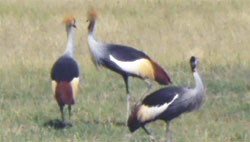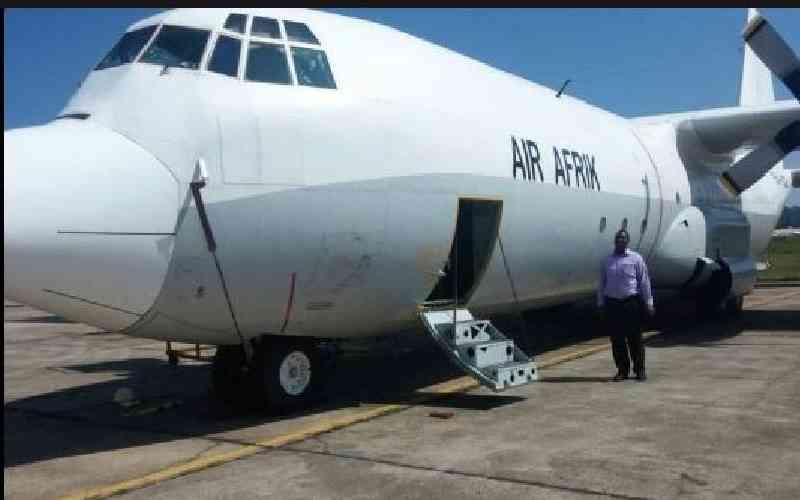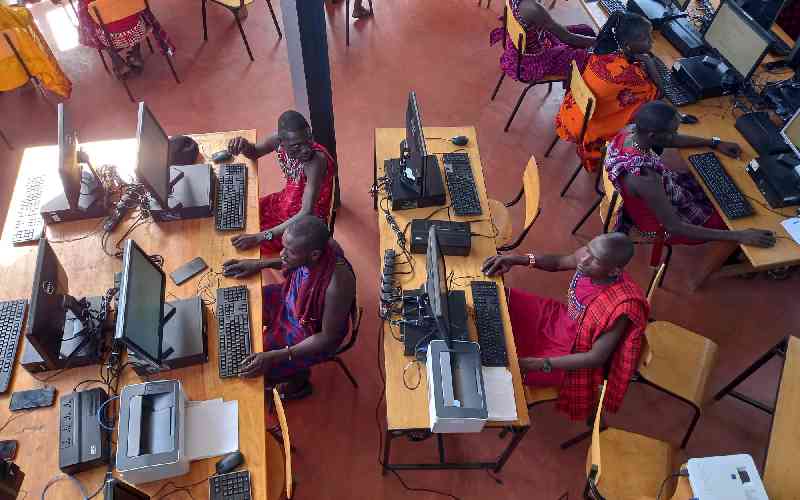By Ferdinand Mwongela
I have heard a lot about Amboseli National Reserve (formerly Amboseli National Park). From her famous elephants to the view of the snow-capped peak of Mt Kilimanjaro, the park is one you can’t miss to visit.
It is Kenya’s most spectacular displays of wildlife — lion, elephant, leopard, cheetah, and buffalo creating Kenya’s most sought after photographer’s parade.
 |
Birds roam the Amboseli. Photo: Ferdinand Mwongela/Standard |
It is said that Amboseli has about 1500 elephants, the largest number in all Kenyan parks and reserves per square metre. We soon prove this as we stumble upon herds after every few kilometres.
The Observation hill
Being on the border, animals cross between the two countries at will. In the dry season, the herds are found in the low-lying Amboseli but retreat to higher ground in Tanzania at the foot of Mt Kilimanjaro in the wet season.
Our driver decides to head straight for the highest point in Amboseli, the Observation Hill where one can see the entire park. Our eyes are now peeled looking for the king of the jungle, the lion. We soon hit pay dirt. About 500 metres from the road, a lion is stalking a herd of impala who by now are alert, their heads held high. We, however, can only see a small speck as the distance is too far. As tourist vans slowly gather around waiting for the inevitable dash, we move on towards Observation Hill hoping that we will have a chance to see the lion at close quarters.
Time, however, beats us and we have to head back, promising ourselves that the next day we will complete our mission. This we did on the third day after the Deputy park warden Adan Kala gave us a driver and a guide back to the place where we had seen the lions. He tells us that this pride has about 16 lions who share a love for the spot.
Determined, we drive straight on with a few brief stops for photos. Another herd of elephants passes very close and in our open vehicle we feel thoroughly exposed. We slow down to let them pass. They, however, start trumpeting, signalling danger and we know the lions are around. The young ones move quickly to the middle of the herd. Back to the lions’ den referred to as Makindu due to the coniferous plants all around here, we slowly approach, looking for any sign of the lions. Soon we spot two cubs lying in a clearing, a big lioness watching over them. About 50 metres away, a herd of impala is carefully watching the bushes, most likely not seeing the lions aware all the same.
Right then I did not feel very safe knowing that there are at least ten other lions somewhere in the shrubs. As we went closer, another lioness, who was playing with a cub hidden, comes into sight. The cubs move away from us and put the lionesses between them and us. When a third lioness appears; I know the bushes are teaming with lions. A low grunt from one was enough and we were soon on our way after snapping a few cowardly pictures.
Aero gymnastics
Elsewhere, the aerial census went on well. Preliminary results trickling indicated that the animals were present in good numbers and the drought had hardly put a dent. When we finally take to the skies, I am worried about the manoeuvres I see the pilots doing in the air not sure my stomach would contain the air gymnastics.
From the air, in a small KWS aircraft, the vast plains roll open, mirrored beautifully in the setting sun with Mt Kilimanjaro in the background. Below us, animals graze unhurriedly.
Stay informed. Subscribe to our newsletter
As luck would have it, the KWS brought in several trucks of zebras being relocated to the park. It was a sight to behold as they dashed to freedom and some right into the mouths of predators.
 The Standard Group Plc is a
multi-media organization with investments in media platforms spanning newspaper
print operations, television, radio broadcasting, digital and online services. The
Standard Group is recognized as a leading multi-media house in Kenya with a key
influence in matters of national and international interest.
The Standard Group Plc is a
multi-media organization with investments in media platforms spanning newspaper
print operations, television, radio broadcasting, digital and online services. The
Standard Group is recognized as a leading multi-media house in Kenya with a key
influence in matters of national and international interest.
 The Standard Group Plc is a
multi-media organization with investments in media platforms spanning newspaper
print operations, television, radio broadcasting, digital and online services. The
Standard Group is recognized as a leading multi-media house in Kenya with a key
influence in matters of national and international interest.
The Standard Group Plc is a
multi-media organization with investments in media platforms spanning newspaper
print operations, television, radio broadcasting, digital and online services. The
Standard Group is recognized as a leading multi-media house in Kenya with a key
influence in matters of national and international interest.








